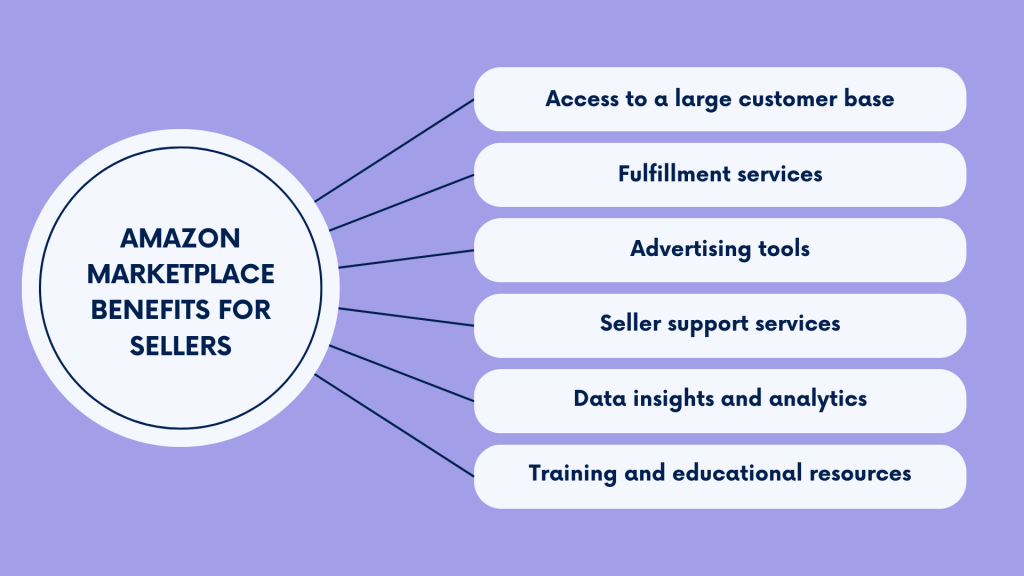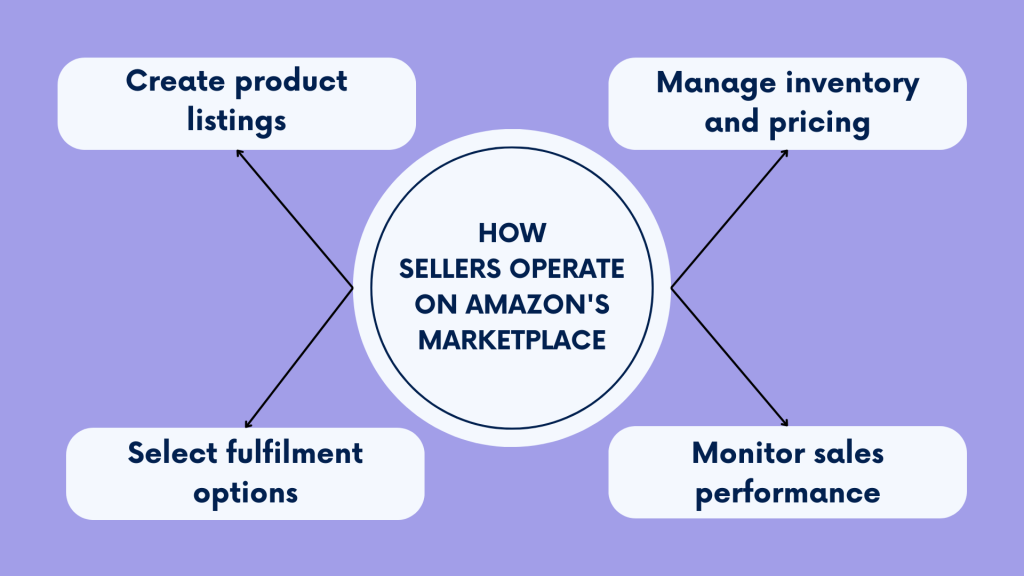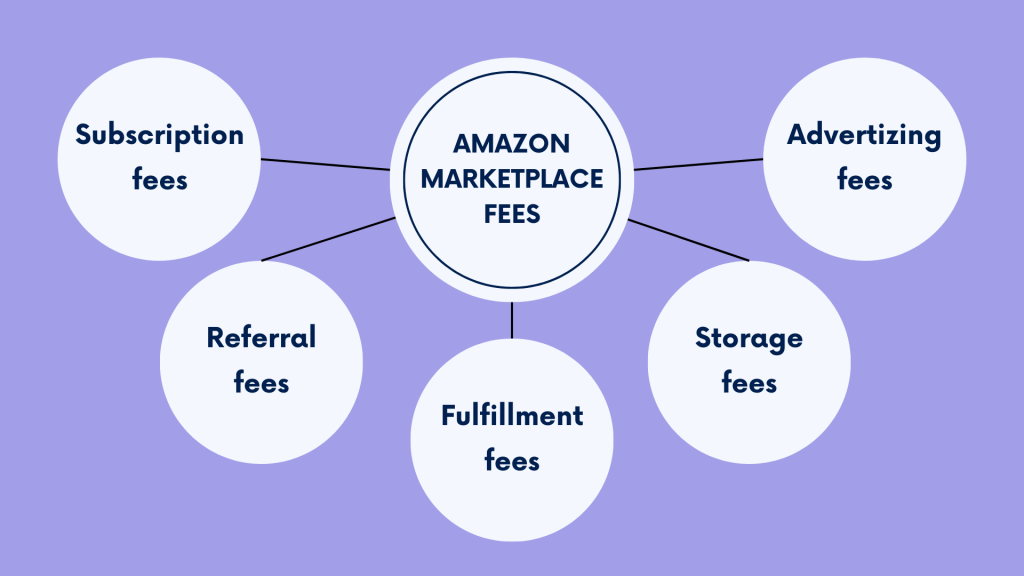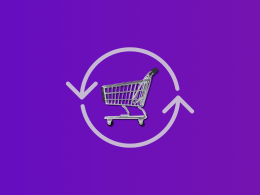The biggest virtue of Amazon Marketplace for sellers lies in its unparalleled access to a vast global customer base, offering immense opportunities for product exposure and growth. However, selling on Amazon Marketplace can be challenging, as sellers contend with fierce competition, pricing pressures, and changing policies.
In this article, we’re looking at the workings of Amazon Marketplace, aiming to provide a comprehensive understanding of its operations to help sellers effectively leverage its potential for success.
Key takeaways
- Amazon Marketplace offers sellers a global platform to list and sell their products alongside Amazon’s offerings, leveraging Amazon’s infrastructure and vast customer base for enhanced visibility and sales potential.
- Amazon provides sellers with various support services, including access to a large customer base, fulfillment services like FBA, advertising tools, and seller support services, facilitating business growth and expansion within the Marketplace ecosystem.
- Sellers on Amazon Marketplace face intense competition, pricing pressure, inventory management, policy changes, handling customer reviews, counterfeit products, and performance metrics, necessitating strategic planning, adaptability, and proactive management to navigate these hurdles successfully.
What is Amazon Marketplace?
Amazon Marketplace is an online platform where individuals and businesses can sell their products alongside Amazon’s offerings. It’s like a huge virtual marketplace where sellers from all over the world can list their items for sale, ranging from electronics and books to handmade crafts and vintage goods. The Marketplace operates within Amazon’s website, allowing customers to browse and purchase products directly from third-party sellers.
Sellers on Amazon Marketplace have storefronts where they can showcase their products, set prices, and manage inventory. When a customer buys an item from a Marketplace seller, Amazon handles the transaction process, including payment processing and customer service. This setup allows sellers to reach a vast audience of millions of Amazon customers while benefiting from the trust and infrastructure of the Amazon brand.
If you integrate Amazon with QuickBooks Online, QuickBooks Desktop, Xero, or another accounting platform, you can get your sales transactions in your accounting automatically.
- Related:
Learn how to accept credit card payments in QuickBooks Desktop.
What is the difference between Amazon and Amazon Marketplace?
Amazon and Amazon Marketplace are closely related but serve different purposes. Amazon is a giant online retailer that sells a wide range of products directly to customers. It’s an extensive virtual store where you can find almost anything you need, from electronics and clothing to groceries and household items.
Amazon Marketplace is a platform within Amazon’s website where third-party sellers can list and sell their products alongside Amazon’s offerings. It’s a digital marketplace where individual sellers and businesses can reach millions of customers without building their ecommerce websites.
In other words, Amazon sells products directly to customers, Amazon Marketplace allows other sellers to do the same, expanding the variety of products one can buy on the platform.
Is it safe to buy from Amazon Marketplace?
Buying from Amazon Marketplace is generally considered safe for customers due to several reasons:
- Amazon verifies the identity of all Marketplace sellers, which helps ensure that customers are dealing with legitimate businesses or individuals.
- Amazon provides customers with an A-to-Z Guarantee, which protects them against fraudulent transactions, defective products, and items that never arrive.
- Amazon handles payment processing for all Marketplace transactions, offering secure payment options and encryption to protect customers’ financial information.
- Customers can read reviews and ratings from other buyers before making a purchase, helping them make informed decisions about the reliability and quality of products and sellers.
- Amazon offers responsive customer service to address any issues or concerns that customers may encounter during the buying process.
Overall, Amazon Marketplace prioritizes customer safety and satisfaction, making it a secure platform for purchasing a wide variety of products from trusted sellers. And sellers can leverage this reputation and customer trust, doing their business on Amazon Marketplace.
How does Amazon support sellers in growing their businesses?
Apart from being a trusted marketplace for customers, Amazon provides several avenues of support to help sellers grow their businesses. And that’s another reason for so many sellers to bring their business to Amazon.
Let’s break it down.

#1 – Access to a large customer base
By listing products on Amazon Marketplace, sellers gain access to millions of customers worldwide who visit the platform daily to shop for various items. This exposure can significantly increase the visibility of sellers’ products and attract new customers who may not have discovered their offerings otherwise.
#2 – Fulfillment services
Sellers can utilize Amazon’s fulfillment services (Fulfillment by Amazon or FBA) to store their inventory in Amazon’s warehouses. With FBA, Amazon handles packaging, shipping, and customer service inquiries, allowing sellers to focus on other aspects of their business, such as sourcing new products, marketing, and expanding their product lines.
Additionally, FBA offers benefits such as Amazon Prime eligibility, which can attract more customers who prefer fast and reliable shipping options.
- Related:
How to Sell on Amazon Without Inventory: Dropshipping & FBA Explained
Best Products to Sell on Amazon FBA: A Guide on What to Sell on Amazon FBA
#3 – Advertising tools
Amazon offers various advertising tools and programs, such as Sponsored Products and Amazon Advertising, that allow sellers to promote their products to targeted audiences.
These tools enable sellers to create customized ad campaigns based on keywords, product categories, and customer demographics, increasing the visibility of their products and driving more traffic to their listings. By strategically investing in advertising, sellers can maximize their sales potential and outperform competitors in crowded market segments.
#4 – Seller support services
Amazon provides dedicated support services to help sellers navigate the platform, troubleshoot issues, and optimize their listings for better visibility and sales performance. Sellers can access support through various channels, including email, phone, and live chat, to receive assistance with account management, policy compliance, and performance optimization.
Amazon’s seller support team offers personalized guidance and recommendations tailored to each seller’s unique business needs, helping them overcome challenges and achieve their growth objectives within the Amazon Marketplace ecosystem.
#5 – Data insights and analytics
Sellers have access to data insights and analytics tools that provide valuable information about customer behavior, market trends, and product performance.
These tools enable sellers to track key metrics such as sales volume, conversion rates, and customer feedback, allowing them to identify opportunities for improvement and make data-driven decisions to optimize their inventory and marketing strategies. All these help sellers identify emerging trends, capitalize on seasonal demand fluctuations, and adjust pricing strategies to maximize profitability.
#6 – Training and educational resources
Amazon offers training programs, webinars, and educational resources to help sellers learn best practices for selling on the platform. These resources cover various topics, including listing optimization, product photography, inventory management, and customer service techniques.
Sellers can access comprehensive guides, tutorials, and case studies to deepen their understanding of Amazon’s policies and algorithms, empowering them to make informed decisions and adapt to changing market conditions.
Besides, Amazon’s seller forums and community groups provide opportunities for sellers to network, share insights, and learn from each other’s experiences, fostering a collaborative and supportive ecosystem that encourages continuous learning and professional development.
How does Amazon’s Marketplace work?
Now, you might want to know how it works being a seller on Amazon Marketplace, and we’ll break it down for you right away.
How do you start with Amazon Marketplace?
Starting on Amazon Marketplace is quite simple. To begin, you’ll need to make a seller account on Amazon.
You can pick from two kinds of accounts – Individual and Professional. The choice depends on how much business you’re doing through the marketplace. So, if planning to sell less than 40 items a month, you might perfectly go with the Individual account. But if you’re looking to sell a lot, the Professional account is better for you.
After you’ve chosen your account type, you’ll need to give some important details like your business information, bank account details for getting paid, and your tax ID numbers.
How do sellers operate on Amazon’s Marketplace?
Once the account is registered, you take a couple of more steps to showcase your products and start selling. Let’s look at how you usually do it as an Amazon Marketplace seller.

Step #1 – Creating product listings
You might want to start by creating product listings on Amazon Marketplace. This process involves creating comprehensive descriptions, incorporating high-quality images, and establishing competitive pricing for each item you wish to sell.
Step #2 – Managing inventory and pricing strategies
Sellers wield complete autonomy over their inventory and pricing methodologies within the Amazon Marketplace framework. Through the seller dashboard provided by Amazon, sellers can effectively oversee inventory levels, regularly update product details, and adapt pricing strategies in response to market dynamics and competitive forces.
Step #3 – Monitoring sales performance
A critical aspect of operating on Amazon Marketplace involves closely monitoring sales performance. Sellers utilize the seller dashboard to track key metrics, including sales volumes, conversion rates, and customer feedback. This data-driven approach empowers sellers to make informed decisions on inventory management and pricing optimization, affecting overall sales efficacy.
Step #4 – Order fulfillment options
Upon receiving an order, sellers get notifications and must ensure timely order fulfillment.
They can go with two primary fulfillment options – self-fulfillment or Amazon’s Fulfillment by Amazon (FBA) service.
While self-fulfillment grants sellers direct control over order processing and shipment, opting for FBA entails entrusting Amazon with the storage, packaging, and shipping logistics, which can streamline the fulfillment process and augment customer satisfaction.
What types of products can sellers offer on Amazon’s Marketplace?
Amazon Marketplace provides sellers with a diverse array of categories in which they can list their products, catering to a broad spectrum of consumer needs and preferences. These categories range from electronics and clothing to books, toys, home goods, and more.
Also, sellers can offer various product conditions, including brand-new, refurbished, and gently used items, accommodating different consumer preferences and budgetary constraints. Plus, Amazon Handmade serves as a specialized platform within Amazon Marketplace, where artisans and craftspeople can exhibit their unique, handcrafted creations, such as jewelry, home décor, and other artisanal goods.
Meanwhile, sellers must adhere to Amazon’s stringent guidelines and policies governing product authenticity, condition, and prohibited items.
For instance, sellers must accurately represent the condition of their products, ensuring transparency and integrity in all product listings.
They also should comply with Amazon’s policies regarding counterfeit goods, restricted items, and prohibited substances, safeguarding the trust and confidence of customers.
What does Amazon Marketplace charge mean?
Amazon Marketplace charges sellers several fees for utilizing its platform and services. As a seller, you might want to know and understand them to manage your finances efficiently and ensure profitability.

#1 – Subscription fees
Sellers opting for Professional accounts incur a monthly subscription fee. This type of account (as mentioned) is suitable for high-volume sellers who intend to list more than 40 items per month. Professional accounts offer access to advanced selling tools and features to streamline operations and scale businesses efficiently.
#2 – Referral fees
Referral fees are charged based on the category and selling price of the item. Amazon deducts a percentage of the total sales price (excluding taxes and shipping) as a referral fee for facilitating the sale. The referral fee percentage varies across product categories, with some categories commanding higher referral fees than others.
#3 – Fulfillment fees (FBA)
Sellers utilizing Amazon’s FBA service incur fulfillment fees for storage, packaging, and shipping of products. FBA fees vary based on item size, weight, and fulfillment center location. Sellers can benefit from Amazon’s extensive fulfillment network, offering customers fast and reliable shipping options.
#4 – Storage fees
Sellers storing inventory in Amazon’s fulfillment centers may be subject to storage fees based on the volume of space occupied by their products. Storage fees are assessed monthly and vary depending on product size, seasonality, and inventory turnover rates.
#5 – Advertising fees
Sellers may opt to promote their listings through Amazon’s advertising services, such as Sponsored Products and Amazon Advertising. Advertising fees are incurred based on the chosen advertising campaign’s budget, targeting options, and bid strategy. Investing in advertising can help sellers enhance product visibility, attract more customers, and drive sales growth.
#6 – Other optional service fees
Amazon Marketplace offers optional services and features that sellers can utilize to enhance their selling experience and optimize performance. These may include premium account upgrades, access to advanced analytics tools, and additional seller support services. Optional service fees vary depending on the nature and scope of the service or feature selected.
How can sellers optimize their product listings on Amazon Marketplace?
Optimizing product listings on Amazon Marketplace is essential for sellers to increase visibility, attract customers, and drive sales. Here are some strategies that might help sellers optimize their product listings for better performance.
Strategy #1 – Compelling product titles
Craft descriptive and keyword-rich product titles that accurately convey the product’s features, benefits, and key attributes. Include relevant keywords that potential customers are likely to search for to improve search visibility and ranking.
Strategy #2 – Detailed product descriptions
Provide comprehensive and engaging product descriptions that highlight the unique selling points, functionalities, and benefits of the product. Use bullet points or numbered lists to organize information clearly and facilitate easy comprehension for customers.
Strategy #3 – High-quality images
Utilize high-resolution images that showcase the product from multiple angles and perspectives. Clear, professional-quality images help customers visualize the product and make informed purchasing decisions. Ensure images comply with Amazon’s image guidelines on size, format, and content.
Strategy #4 – Competitive pricing
Set competitive pricing for your products to remain competitive within your product category. Conduct thorough market research to understand pricing trends, competitor pricing strategies, and customer preferences. Consider offering discounts, promotions, or bundled deals to incentivize purchases and attract price-conscious customers.
Strategy #5 – Utilize enhanced content
Consider using Amazon’s Enhanced Brand Content (EBC) or A+ Content features to enhance your product listings with multimedia elements, such as enhanced images, videos, and engaging product descriptions. Enhanced content helps differentiate your brand, establish credibility, and drive conversion rates.
Strategy #6 – Optimize keywords
Incorporate relevant keywords strategically throughout your product listing, including in the title, bullet points, product description, and backend search terms. Conduct keyword research using tools like Amazon’s search term report, Google Keyword Planner, or third-party keyword research tools to identify high-converting keywords and phrases.
Strategy #7 – Monitor customer reviews
Regularly monitor customer reviews and feedback to identify areas for improvement and address any concerns or issues raised by customers promptly. Positive reviews can boost product credibility and conversion rates while addressing negative feedback demonstrates responsiveness and commitment to customer satisfaction.
Strategy #8 – Leverage Amazon Advertising
Consider investing in Amazon Advertising to increase product visibility and reach a larger audience. Target relevant keywords, optimize ad copy, and monitor campaign performance to maximize return on investment (ROI) and drive sales.
Strategy #9 – Optimize for mobile
Ensure your product listings are optimized for mobile devices, as a significant portion of Amazon shoppers browse and make purchases using smartphones and tablets. Test your listings across various devices and screen sizes to ensure seamless navigation and optimal user experience.
What are some common challenges for sellers on Amazon Marketplace?
For Amazon sellers, knowing the typical challenges on Amazon Marketplace is crucial. This way, you know what to expect, can better understand how to stand out from competitors, manage risks, improve over time, and keep customers happy. Let’s look at Amazon Marketplace’s challenges in more detail.
Challenge #1 – Competition
One of the most significant challenges for sellers on Amazon Marketplace is the intense competition. With millions of sellers offering similar products, standing out from the crowd and capturing the attention of customers can be daunting. Sellers must devise effective strategies to differentiate their products, establish a unique selling proposition, and compete effectively within their niche.
Challenge #2 – Buy Box competition
The Buy Box is a coveted feature on Amazon that allows customers to add items directly to their cart with a single click. Winning the Buy Box can significantly boost sales and visibility for sellers. However, it’s a highly competitive matter, and sellers must meet specific criteria, including competitive pricing, high seller ratings, and fast shipping times, to be eligible.
Challenge #3 – Pricing pressure
Sellers often face pricing pressure on Amazon Marketplace, driven by dynamic pricing algorithms, price wars with competitors, and customer price sensitivity. Maintaining competitive pricing while preserving profit margins requires careful monitoring of market trends, and competitor pricing strategies and adjusting accordingly.
Challenge #4 – Managing inventory
Managing inventory effectively is a common challenge for sellers, especially those utilizing Amazon’s Fulfillment by Amazon (FBA) service. Balancing inventory levels, forecasting demand, and avoiding stockouts or overstock situations are crucial to meeting customer demand, minimizing storage costs, and optimizing operational efficiency.
Challenge #5 – Amazon policy changes
Amazon frequently updates its policies, algorithms, and marketplace rules, which can impact sellers’ operations and performance. Adapting to policy changes, staying compliant with Amazon’s guidelines, and navigating policy enforcement actions require vigilance and proactive communication with Amazon’s seller support team.
Challenge #6 – Handling customer reviews and feedback
Customer reviews and feedback play a significant role in influencing purchasing decisions on Amazon Marketplace. Negative reviews or feedback can adversely impact a seller’s reputation and sales performance. Managing customer feedback, addressing customer concerns promptly, and striving for excellent customer service are essential for maintaining a positive seller reputation.
Challenge #7 – Counterfeit and unauthorized sellers
Sellers may encounter challenges related to counterfeit products and unauthorized sellers hijacking their listings. Protecting intellectual property rights, combating counterfeiters, and enforcing brand exclusivity requires proactive brand protection strategies and collaboration with Amazon’s Brand Registry program.
Challenge #8 – Performance metrics and suspension
Amazon monitors seller performance metrics closely and may suspend or terminate seller accounts for violating performance standards or policy violations. Maintaining high seller performance metrics, resolving order defects, and adhering to Amazon’s performance guidelines are essential for sustaining long-term success on Amazon Marketplace.
Final word
Amazon Marketplace is a beacon of opportunity for sellers and customers, offering a dynamic platform where millions of products meet millions of eager buyers. While the potential for success is undeniable, navigating this bustling marketplace demands careful preparation, strategic adaptation, and continuous refinement of selling strategies. From accessing a global audience to leveraging robust support services and data-driven insights, sellers can harness the power of Amazon Marketplace to scale their businesses and thrive in the digital landscape.
As sellers embark on their journey, embracing innovation, agility, and customer-centricity will help unlock the full potential of this ecosystem. With dedication, perseverance, and a willingness to embrace change, sellers can embark on a rewarding journey, driving growth, fostering customer loyalty, and shaping the future of commerce on Amazon Marketplace.
Share your thoughts
Are you selling on Amazon Marketplace? How does it work for you? Share your thoughts and experience in the comments section below. We’re fond of good stories!











.png)